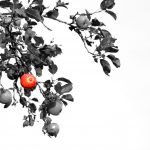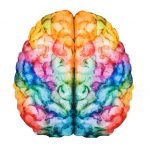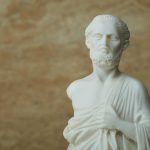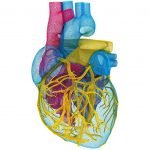Defying Marginalization Begins in the Classroom: Where Philosophy Meets Curriculum
David Schleich, PhD
We get so upset with biomedicine. There are many reasons. For example, as one social scientist reminded us, the allopathic medical establishment has ignored and thus tolerated the promotion of junk food, industries producing dangerous by-products, hazardous work practices, urban planning that reduces incentives and opportunities for exercise, and many other unhealthy aspects of everyday life, not to mention the massive level of iatrogenic disease. (Martin, 2004, p. 716)
The work of Edmund D. Pellegrino can help us calm down in the face of these philosophically and ethically odd behaviors (biomedicine professionals, after all, are supposed to be as committed to healing people and the planet as we are), not to mention the willful marginalizing of the naturopathic profession, its values, and its successes.
Pellegrino has been a scholar of bioethics and the philosophy of medicine for several decades. From within the mainstream higher education sector, he writes about familiar topics whose intended audiences are his own academic colleagues and the status quo allopathic world. Even so, his ideas and themes ricochet through our eclectic conversations about the principles and philosophy of naturopathic medicine too. As a case in point, Pellegrino’s original work on the healing relationship is a key component in his larger goal of placing humanism into the standard allopathic medical curriculum. In this regard, Pellegrino also wrote about what he calls the “patient’s good” (2008, p. ix). Essentially, his lifetime scholarship is about “virtue-based normative ethics for health care” (Pellegrino, 2008, p. 112). His abundant writings and the journal he founded, The Journal of Medicine and Philosophy, are a rich resource for reflective NDs.
What is valuable for those of us in the naturopathic medical education world is to take note that what has happened to the biomedicine profession also has affected the naturopathic profession. At one extreme, we may even be concerned that, in Pellegrino’s words, “the profession of medicine [has] [already] transformed from a guild to a trade” (2008, p. 5). The symptoms of this transformation are echoed in what the early naturopaths and contemporary NDs consider to be true of the dominant, allopathic biomedicine profession and the industry that has grown up around it. Among many more, there are these 10 challenges to the biomedicine profession that Pellegrino identifies. They are familiar territory for us too:
- Over-specialization and over-professionalization
- Technicism characterized by too much science and not enough liberal arts and behavioral science
- Insensitivity to personal and sociocultural values
- Too narrow a construal of the doctor’s role
- Not enough emphasis on prevention, patient participation, and patient education
- Too much economic incentive
- Insensitivity to the poor and socially disadvantaged
- Over-medicalization of everyday life
- Inhumane treatment of medical students and overwork by house staff
- Deficiencies in verbal and nonverbal communication (Pellegrino, 2008, p. 6)
Despite these blemishes to sustainable, ethical professional formation, Pellegrino feels that the physician, allopathic or naturopathic, nevertheless has a continuing obligation for relationship, and only in that transaction of relating can there be what he called “the possibility for virtue as a professional” (2008, p. 9). For him, the professional healer simply has to “maintain . . . autonomy over political and socio-economic pressures” (Pellegrino, 2008, p. 11). We may wonder to what extent the naturopathic profession is cognizant of Pellegrino’s list. We may worry that our beliefs and preoccupations (always catalysts for what we teach our students), via the brace of curricular materials we keep reengineering, tinkering with, and delivering, are inevitably propelling the profession in the same direction.
On balance, I think not. One marker of our differing path is that the philosophers in the naturopathic profession do not hesitate—in a landscape where evidence-based medicine is a mantra and where presenting our therapies, modalities, and research outcomes in scientific packages represents important strategies for acceptance—to challenge sometimes the validity and utility of the science behind medicine. These same colleagues continue to present a counter to the day-to-day practice of research and clinical work defined by scientific inquiry. Their voices still live in many of the students who found their way to our programs, already having chosen not to follow the well-trodden paths of the allopathic medical professions, seeking instead to heal people and a planet hungry for holism without drugs and invasive protocols. In defense of this perspective, one could have a look at Peter Medawar’s argument in “Is the Scientific Paper a Fraud?” (1993) or at the still-famous 1979 Herbert Spencer Lecture (Heath, 1981) to be reminded that philosophy and science are perhaps no more compatible with regard to medicine these days than they were a century or more ago. In fact, there are those who would claim that as we build the profession we must not let the philosophical basis of contemporary naturopathic practice become shredded by a compelling need to move from the status of a heterodox medical system to an orthodox one, as occurred, say, for the osteopaths. The biomedicine lobbyists in state legislatures formally assault NDs as clinically heretical because we hang on to values and modalities that they find unacceptable, and they couch their claims in the jargon of science.
What some say is “dissent and heresy in medicine” (Martin, 2004, p. 713) is really about the domination of the marginalized by the allopathic players who do not want to let their privilege and power slip. They cannot imagine cooperation in the landscape of primary care. It is an old story, and we have been right in the thick of it for decades, as have the chiropractors and certain of the biomedicine professions seeking to get out from under the monopolistic clout and bruising of the American Medical Association. And, even when the self-proclaimed language of biomedicine, the scientific method, is utilized to announce an important finding in defense of some aspect of our medicine, those conclusions are invariably dismissed as unscientific and heretical. For example, Benveniste’s remarkable conclusion that very dilute solutions “can have biological activity” (Davenas et al., 1988, p. ), in support of the field of homeopathy, is flung into the land of heresy by allopathic authorities in the biomedicine profession, many of whom cannot imagine a reality or framework different from their own.
Some of our colleagues are exasperated by the unrelenting opposition to licensing by MD and DO lobby teams in state legislatures, not understanding why well-educated healthcare professional bodies cannot tolerate in their own philosophies and political entitlements multiple truths about the potential of different modalities and paradigms of health promotion, even when a particular therapy (or a therapy that departs from a standard of care) can be effective. Martin said about such a “market of modalities” that patients are less inclined these days to hold some a priori assumption that “any single modality provides a universal answer” (2004, p. 714). What is happening, Gottlieb insisted, is that the increasing role of markets in health and medicine “means that modalities compete with each other in a market in which claims to exclusive truth are less persuasive than in the past, with consumers’ demands for ‘choice’ fostering a tolerance for diverse truths” (1997, p. 37).
What we need instead in an integrative medicine universe is an assumption of a “plurality of truths” (Martin, 2004, p. 715) in which “researchers and practitioners would be happy to help each other develop greater insights on a range of perspectives” (Martin, 2004, p. 715). Alas, in the real world of biomedicine, research and practice are characterized by rivalries and power plays (Boffey, 1975; Dickson, 1984; Greenberg, 1967). In such a world of active marginalization and rivalry, we diminish ourselves by adopting strategies designed simply to defeat biomedicine politically, trying to gain what the MDs and DOs have and we do not, inherent advantage and control. Notwithstanding our best intentions and tactics, it will take more than, say, publishing outstanding research within the same epistemological sector as what Baer called the “dominative, orthodox medical system” (2001, p. 43) to make a dent and carve out a safe place. Perhaps, as Martin suggested, we would be more successful simply by “competing for more market share” (2004, p. 716) and, in lieu of “trying to compete on epistemological grounds, namely tacking orthodoxy on its own terms, to examine instead each of the methods by which orthodoxy maintains its position” (Martin, 2004, p. 716). We have been doing some of this, and sometimes a lot of this, for decades, state by state, research article by research article, and agency by agency (e.g., the Council on Naturopathic Medical Education, regional accreditation for our stand-alone schools, loan forgiveness for our graduates in certain jurisdictions, media and public forum presence, and corporate funding for research).
Alas, there are some scholars who remind us often that by cooperating with the dominant allopathic medical establishment in some kind of quest for scientific truth and healthcare efficacy we will gain their recognition and their neutrality. Such a world, they say, is in the end just a widespread myth (Collins & Pinch, 1998; Feyerabend, 1975; Mitroff, 1974). Our best strategy is likely to seek, build, and call to the attention of beleaguered consumers of health our very real clinical and healing successes. Results will speak volumes. Our training then must include not only the best didactic and clinical education possible but also conscious tactics to avoid those top 10 challenges along the path of professional formation that Pellegrino points out as diluters of professional integrity and effectiveness in the world.
 David Schleich, PhD is president and CEO of NCNM, former president of Truestar Health, and former CEO and president of CCNM, where he served from 1996 to 2003. Previous posts have included appointments as vice president academic of Niagara College, and administrative and teaching positions at St. Lawrence College, Swinburne University (Australia) and the University of Alberta. His academic credentials have been earned from the University of Western Ontario (BA), the University of Alberta (MA), Queen’s University (BEd), and the University of Toronto (PhD).
David Schleich, PhD is president and CEO of NCNM, former president of Truestar Health, and former CEO and president of CCNM, where he served from 1996 to 2003. Previous posts have included appointments as vice president academic of Niagara College, and administrative and teaching positions at St. Lawrence College, Swinburne University (Australia) and the University of Alberta. His academic credentials have been earned from the University of Western Ontario (BA), the University of Alberta (MA), Queen’s University (BEd), and the University of Toronto (PhD).
References
Baer, H. (2001). Biomedicine and alternative healing systems in America. Madison: The University of Wisconsin Press.
Boffey, P. M. (1975). The brain bank of America: An inquiry into the politics of science. New York: McGraw-Hill.
Collins, H. M., & Pinch, T. (1998). The golem: What you should know about science (2nd ed.). Cambridge: Cambridge University Press.
Davenas, E., Beauvais, F., Amara, J., Oberbaum, M., Robinzon, B., Miadonna, A., et al. (1988). Human basophil degranulation triggered by very dilute antiserum against IgE. Nature, 333(6176), 816-818.
Dickson, D. (1984). The new politics of science. New York: Pantheon.
Feyerabend, P. (1975). Against method: Outline of an anarchistic theory of knowledge. London: New Left Books.
Gottlieb, B. (Ed.). (1997). New choices in natural healing. New York: Bantam.
Greenberg, D. S. (1967). The politics of pure science. New York: New American Library.
Heath, A. E. (Ed.). (1981). Scientific explanation: Herbert Spencer Lecture. Oxford: Clarendon Press.
Martin, B. (2004). Dissent and heresy in medicine: Models, methods, and strategies. Social Science and Medicine, 58, 713-725.
Medawar, P. (1993). Is the scientific paper a fraud? In The strange case of the spotted mice: And other classic essays on science (pp. 33-39). Oxford: Oxford University Press.
Mitroff, I. I. (1974). The subjective side of science: A philosophical inquiry into the psychology of the Apollo moon scientists. Amsterdam: Elsevier.
Pellegrino, E. D. (Author). H. T. Engelhardt, Jr., & F. Jotterand (Eds.) (2008). The philosophy of medicine reborn: A Pellegrino reader (ND studies in medical ethics).Notre Dame, IN: University of Notre Dame Press.










